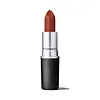What's inside
What's inside
 Key Ingredients
Key Ingredients

 Benefits
Benefits

 Concerns
Concerns

 Ingredients Side-by-side
Ingredients Side-by-side

Polyglyceryl-2 Triisostearate
EmulsifyingEthylhexyl Palmitate
EmollientBis-Diglyceryl Polyacyladipate-2
EmollientSynthetic Wax
AbrasiveSilica
AbrasiveEuphorbia Cerifera Wax
Squalane
EmollientIsononyl Isononanoate
EmollientJojoba Esters
EmollientCaprylic/Capric Triglyceride
MaskingHydrogenated Polycyclopentadiene
Microcrystalline Wax
Emulsion StabilisingOryza Sativa Starch
AbsorbentHelianthus Annuus Seed Wax
Skin ConditioningSclerocarya Birrea Seed Oil
HumectantTocopheryl Acetate
AntioxidantParfum
MaskingMica
Cosmetic ColorantPhenoxyethanol
PreservativeStearalkonium Hectorite
Gel FormingCaprylyl Glycol
EmollientAcacia Decurrens Flower Wax
EmollientPolyhydroxystearic Acid
EmulsifyingLecithin
EmollientPolyglycerin-3
HumectantPropylene Carbonate
SolventPolyglyceryl-3 Polyricinoleate
EmulsifyingIsostearic Acid
CleansingIsopropyl Myristate
EmollientTriethoxycaprylylsilane
Polyglyceryl-2 Triisostearate, Ethylhexyl Palmitate, Bis-Diglyceryl Polyacyladipate-2, Synthetic Wax, Silica, Euphorbia Cerifera Wax, Squalane, Isononyl Isononanoate, Jojoba Esters, Caprylic/Capric Triglyceride, Hydrogenated Polycyclopentadiene, Microcrystalline Wax, Oryza Sativa Starch, Helianthus Annuus Seed Wax, Sclerocarya Birrea Seed Oil, Tocopheryl Acetate, Parfum, Mica, Phenoxyethanol, Stearalkonium Hectorite, Caprylyl Glycol, Acacia Decurrens Flower Wax, Polyhydroxystearic Acid, Lecithin, Polyglycerin-3, Propylene Carbonate, Polyglyceryl-3 Polyricinoleate, Isostearic Acid, Isopropyl Myristate, Triethoxycaprylylsilane
Ricinus Communis Seed Oil
MaskingTrioctyldodecyl Citrate
EmollientGlyceryl Triacetyl Hydroxystearate
EmollientEuphorbia Cerifera Wax
Octyldodecanol
EmollientSilica
AbrasiveSimmondsia Chinensis Seed Oil
EmollientSesamum Indicum Seed Oil
EmollientOzokerite
Emulsion StabilisingCopernicia Cerifera Wax
Cetyl Ricinoleate
EmollientMicrocrystalline Wax
Emulsion StabilisingTocopherol
AntioxidantAscorbyl Palmitate
AntioxidantVanillin
MaskingAlumina
AbrasiveTin Oxide
AbrasiveCalcium Aluminum Borosilicate
Calcium Sodium Borosilicate
Mica
Cosmetic ColorantCI 77891
Cosmetic ColorantIron Oxides
CI 77163
Cosmetic ColorantCI 42090
Cosmetic ColorantCI 75470
Cosmetic ColorantCI 15850
Cosmetic ColorantCI 45380
Cosmetic ColorantCI 45410
Cosmetic ColorantCI 73360
Cosmetic ColorantCI 17200
Cosmetic ColorantCI 19140
Cosmetic ColorantCI 15985
Cosmetic ColorantCI 47005
Cosmetic ColorantRicinus Communis Seed Oil, Trioctyldodecyl Citrate, Glyceryl Triacetyl Hydroxystearate, Euphorbia Cerifera Wax, Octyldodecanol, Silica, Simmondsia Chinensis Seed Oil, Sesamum Indicum Seed Oil, Ozokerite, Copernicia Cerifera Wax, Cetyl Ricinoleate, Microcrystalline Wax, Tocopherol, Ascorbyl Palmitate, Vanillin, Alumina, Tin Oxide, Calcium Aluminum Borosilicate, Calcium Sodium Borosilicate, Mica, CI 77891, Iron Oxides, CI 77163, CI 42090, CI 75470, CI 15850, CI 45380, CI 45410, CI 73360, CI 17200, CI 19140, CI 15985, CI 47005
 Reviews
Reviews

Ingredients Explained
These ingredients are found in both products.
Ingredients higher up in an ingredient list are typically present in a larger amount.
Mica is a naturally occurring mineral used to add shimmer and color in cosmetics. It can also help improve the texture of a product or give it an opaque, white/silver color.
Serecite is the name for very fine but ragged grains of mica.
This ingredient is often coated with metal oxides like titanium dioxide. Trace amounts of heavy metals may be found in mica, but these metals are not harmful in our personal products.
Mica has been used since prehistoric times throughout the world. Ancient Egyptian, Indian, Greek, Roman, Aztec, and Chinese civilizations have used mica.
Learn more about MicaMicrocrystalline Wax is created by de-oiling petroleum. It is highly refined and purified before being added to cosmetics.
Microcrystalline Wax is used to enhance the texture and create even consistency. It helps stabilize a product by preventing ingredients from separating.
Silica, also known as silicon dioxide, is a naturally occurring mineral. It is used as a fine, spherical, and porous powder in cosmetics.
Though it has exfoliant properties, the function of silica varies depending on the product.
The unique structure of silica enhances the spreadability and adds smoothness, making it a great texture enhancer.
It is also used as an active carrier, emulsifier, and mattifier due to its ability to absorb excess oil.
In some products, tiny microneedles called spicules are made from silica or hydrolyzed sponge. When you rub them in, they lightly polish away dead skin layers and enhance the penetration of active ingredients.
Learn more about SilicaEuphorbia Cerifera wax comes from a shrub in Northern Mexico. It is used to stabilize formulations and has emollient properties.
Emollients form a thin layer on top of skin to prevent water from evaporating, keeping skin and lips hydrated.
According to a manufacturer, this wax can range from a yellow/brown color to translucent.
Learn more about Euphorbia Cerifera Wax